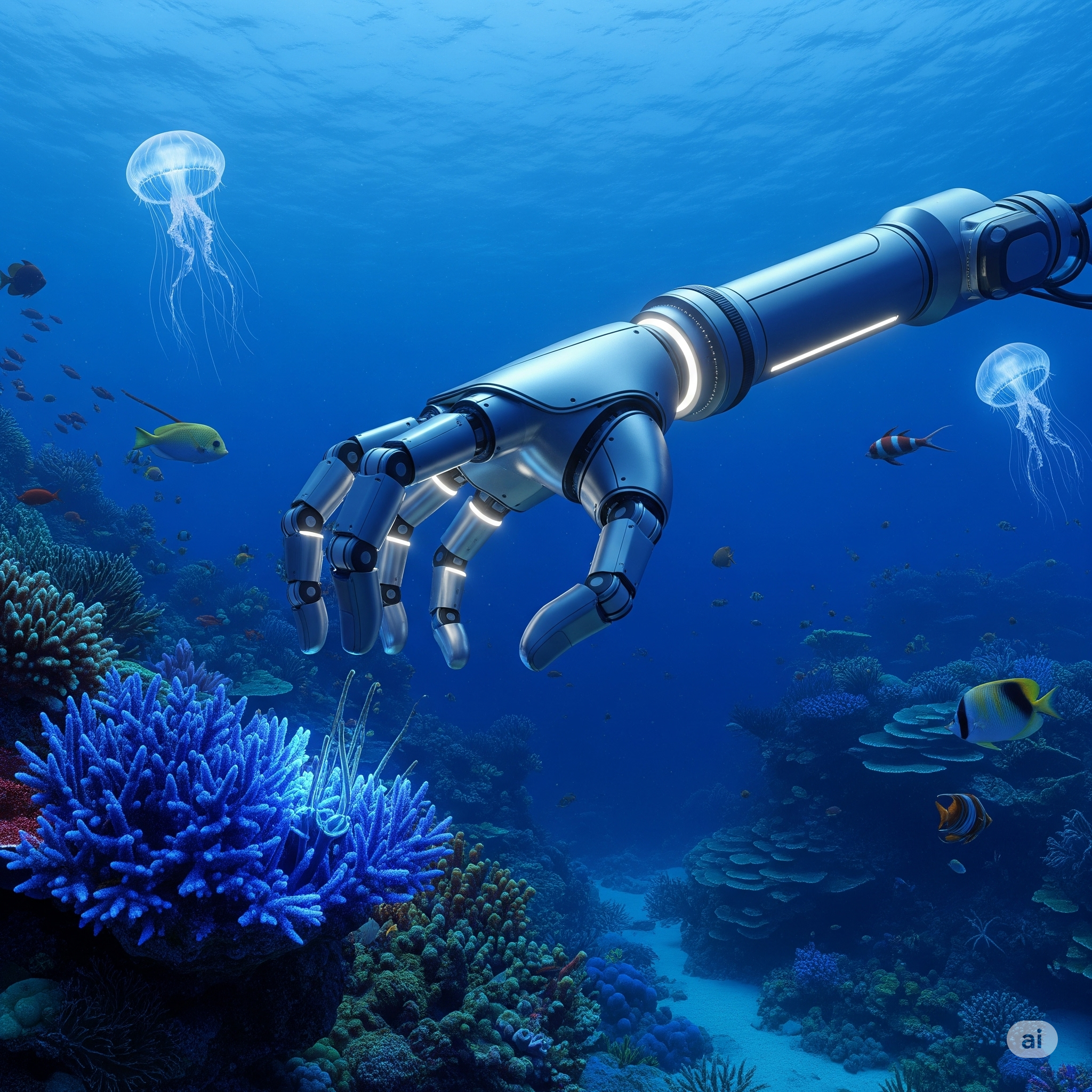In a groundbreaking development that pushes the boundaries of underwater engineering, China has officially commissioned its first seven-function robotic arm for deep-sea oil and gas exploration. This advanced mechanical arm, mounted on a remotely operated vehicle (ROV), made its debut in the resource-rich Pearl River Mouth Basin. It successfully executed precision operations at extreme ocean depths, signaling a technological leap in the domain of subsea resource extraction.
The arm is engineered to operate at depths up to 7,000 meters, a feat that places it among the most advanced underwater tools currently in use globally. This blog explores the significance of this achievement, its technological foundations, and the broader implications for energy, engineering, and environmental management.
What Makes This Robotic Arm Special?
The newly commissioned robotic arm is equipped with seven degrees of freedom, which allows it to mimic the flexibility of a human arm. Its core functions include:
- Gripping and manipulating tools
- Performing precision cuts and connections
- Handling geological samples
- Conducting maintenance on subsea equipment
- Inspecting underwater pipelines and platforms
The arm’s modular design, adaptive feedback sensors, and pressure-resistant materials enable it to perform complex tasks in conditions characterized by crushing pressure, low visibility, and near-freezing temperatures.
Deployment in the Pearl River Mouth Basin
The Pearl River Mouth Basin is a key region for China’s offshore oil and gas reserves. Until now, much of the subsea work in this basin has been heavily dependent on foreign technology. The successful deployment of this homegrown robotic arm reduces that dependence and boosts China’s capacity for independent subsea energy development.
According to official reports, during its inaugural mission the robotic arm:
- Collected deep-sea sediment and rock samples
- Connected equipment on the ocean floor
- Demonstrated high-precision movement and operational stability
This not only validates the mechanical design but also proves its capability for remote and autonomous operation under real-world industrial conditions.
Why 7,000 Meters Matters
The 7,000-meter depth capability is significant for several reasons:
- Extreme Engineering Challenge: Very few ROVs or robotic tools can withstand the immense pressure and cold temperatures at such depths.
- Access to Untapped Resources: It opens up exploration of ultra-deep reserves previously deemed inaccessible.
- Strategic Autonomy: Reduces reliance on Western technology, aligning with China’s Made in China 2025 vision.
To put it into perspective, the average depth of the world’s oceans is around 3,700 meters. A 7,000-meter reach allows operations in some of the most remote and deepest parts of the ocean.
Technological Underpinnings
This deep-sea robotic innovation is powered by a combination of cutting-edge technologies:
1. High-Pressure Resistant Materials
Specialized alloys and composites protect the arm from crushing forces.
2. AI and Sensor Integration
Smart algorithms help the arm respond dynamically to its environment.
3. Modular Joints
Allow multiple modes of movement, including rotation and extension.
4. Real-Time Data Transmission
High-speed undersea communications relay data back to surface teams.
5. Autonomous Capabilities
Limited autonomous control to reduce operator fatigue and latency.
Economic and Strategic Implications
With global energy demands rising and shallow oil fields depleting, the ability to access deep-sea resources is becoming crucial. The development of this robotic arm offers several strategic benefits:
- Enhanced Domestic Energy Security
- Reduced Capital Outflow to Foreign Equipment Providers
- Faster Response to Subsea Accidents or Maintenance Needs
Moreover, this positions China as a competitive player in the high-stakes world of deep-sea resource management, currently dominated by countries like the U.S., Norway, and Japan.
Environmental Considerations
While technological prowess is commendable, deep-sea exploration has raised concerns among marine biologists and environmentalists. Ecosystems at such depths are fragile, slow to recover, and poorly understood.
China’s next challenge will be to balance its energy ambitions with:
- Environmental sustainability
- Biodiversity protection
- Strict regulatory oversight
Transparent environmental impact assessments and adherence to international marine protocols will be crucial as operations expand.
Looking Ahead
This robotic arm is more than a feat of engineering; it is a symbol of China’s growing influence in next-gen industrial technologies. It paves the way for more ambitious endeavors, including:
- Multi-arm ROVs for complex repair and rescue missions
- Integration with autonomous submarines
- Real-time 3D mapping of underwater geology
Such technologies may also find dual-use applications in marine archaeology, underwater construction, and even search-and-rescue missions.
Conclusion
The successful deployment of a seven-function robotic arm capable of operating at 7,000 meters represents a quantum leap in subsea technology. For China, it’s not just about accessing oil and gas; it’s about technological self-reliance, industrial leadership, and strategic foresight. As the world eyes cleaner, smarter, and deeper sources of energy, tools like these will define the next frontier of exploration.
Whether this will usher in a new era of responsible energy extraction or escalate a technological arms race beneath the oceans remains to be seen. But one thing is certain: the deep sea is no longer out of reach.









+ There are no comments
Add yours